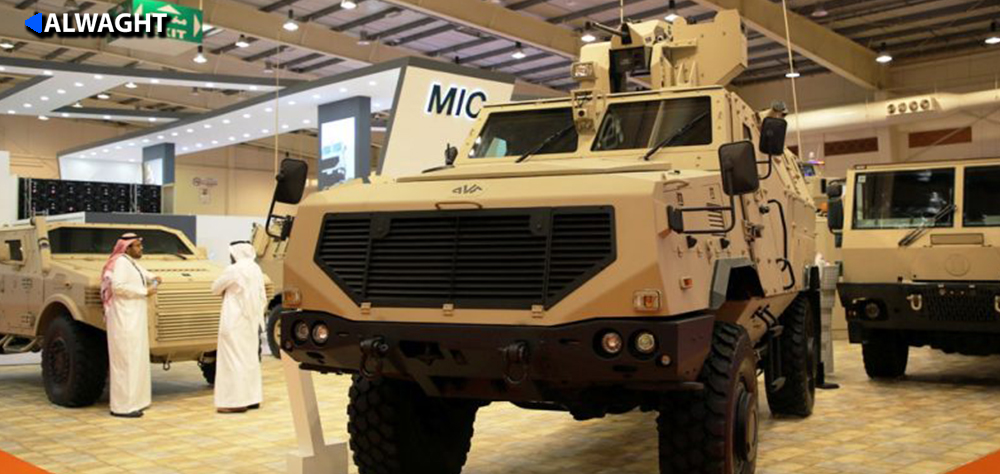Alwaght- Arms trade is the largest commerce branch in the world. Charity organization Oxfam estimates that the arms trade touched $360 billion in 2019. West Asia’s share of the global arms trade has risen 61 percent in the past five years compared to the five years before. The US remains the world's largest supplier of weapons, and Saudi Arabia has become the world's largest costumer of arms dealers in recent years, ranking third in the world in terms of military spending.
However, Saudi officials have stated that they intend to become arms manufacturers in the coming years and reduce dependence on foreign supplies. Ahmed bin Abdulaziz Al-Ohali, head of the General Authority for Military Industries (GAMI), told a news conference at the UAE Abu Dhabi International Defense Exhibition that the kingdom plans to increase military R&D spending from 0.2% to about 4% of the military spending by 2030.
In line with the Saudi 2030 Vision, unveiled by Crown Prince Mohammed bin Salman in late April 2016, Riyadh plans to transform Saudi Arabian Military Industries (SAMI) into one of the world’s top 25 defense contractors by 2030.
Al-Ohali on Saturday said that in the next decade, the oil-wealthy kingdom will invest over $20 billion in its domestic military industries.
As part of the 2030 document, Saudi Arabian defense ministry issued a statement on Saturday allowing the women to join the armed forces.
What are Saudi goals?
Saudi Arabia's military spending has risen sharply in recent years, especially after the war in Yemen, and has become a burden on the country's oil-reliant economy. Saudi resources are not unlimited, especially amid low oil prices and the sharp decline in tourism and Hajj revenues due to the outbreak of the coronavirus. The Saudi economy is facing serious problems. It seems that the Saudi rulers have come to the conclusion that with the current trend they will not be able to bear the cost of the major wars in which they are involved directly or indirectly.
In spring of 2017 and on the SAMI foundation anniversary, bin Salman held that the company tries to be the major catalyst to domestication of 50 percent of the total Saudi military spending by 2030.
Saudi leaders plan for $3.7 billion revenues from the military industries by 2030.
Currently, Saudi Arabia's military industry focuses on the production of rockets, guided missiles, drones, ammunition, and ground vehicles.
Certainly, in order to advance this goal, Saudi Arabia first thinks about acquiring technology and transferring technology from foreign companies— a path that the UAE has already begun.
Currently, the UAE has surpassed Saudi Arabia in the development of an independent defense industry. Over the past five years, Abu Dhabi has invested an average of $23.4 billion annually in the military sector. In 2005, that sum was only $9.4 billion. The Abu Dhabi biennial International Defense Exhibition (IDEX) has also become one of the largest arms exhibitions in the world. Setting the same aim, Saudi Arabia has begun cooperation deals with the US arms giants Boeing, Lockheed Martin, Raytheon, and General Dynamics.
In 2016, a South African munitions company, Rheinmetall Denel Munition (RDM), set up an ammunition factory in Al-Kharj, southeast of Riyadh, producing 300 artillery pieces and 600 mortar shells a day for the Saudi military and also exports.
On Sunday, SAMI signed a cooperation agreement with Lockheed Martin.
In a statement, the company said that joint investment is made to expand domestication potentials through technology transfer to Saudi technicians and training them to provide services to the kingdom’s armed forces.
Lockheed Martin is one of the contractors involved in the $15 billion Terminal High-Altitude Air Defense (THAAD) project in Saudi Arabia, which was part of a major arms deal authorized in 2017 by Donald Trump.
The military cooperation agreements with American companies and stepping up the efforts to produce arms at home are motivated by increasing Washington pressures on Riyadh to end Yemen war, now in its seventh year. Earlier this month, President Joe Biden announced ending the support to the Saudi operations in the devastating war on Yemen. The new administration said it will review arms delivery to the monarchy.
The stances took aback the Saudis as over the past years the aggression on Yemen was possible only on the strength of the US diplomatic and arms support. Cutting off this assistance means the Saudis will be left in despair to advance their operations against the Yemenis whose current military capabilities are never comparable to start of war in 2015.



























